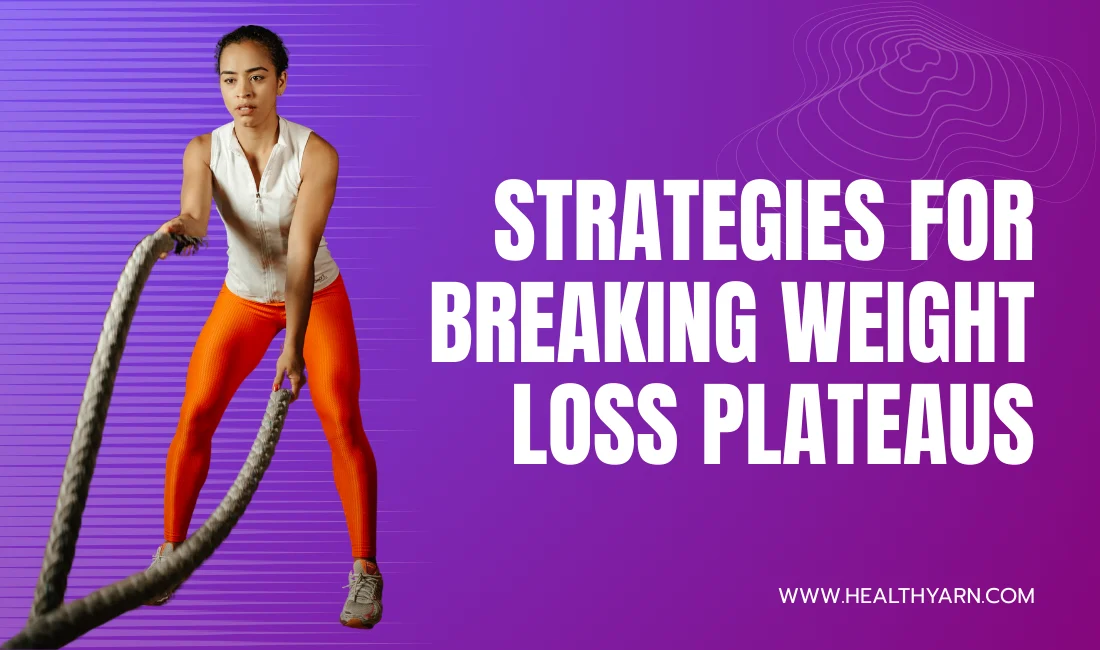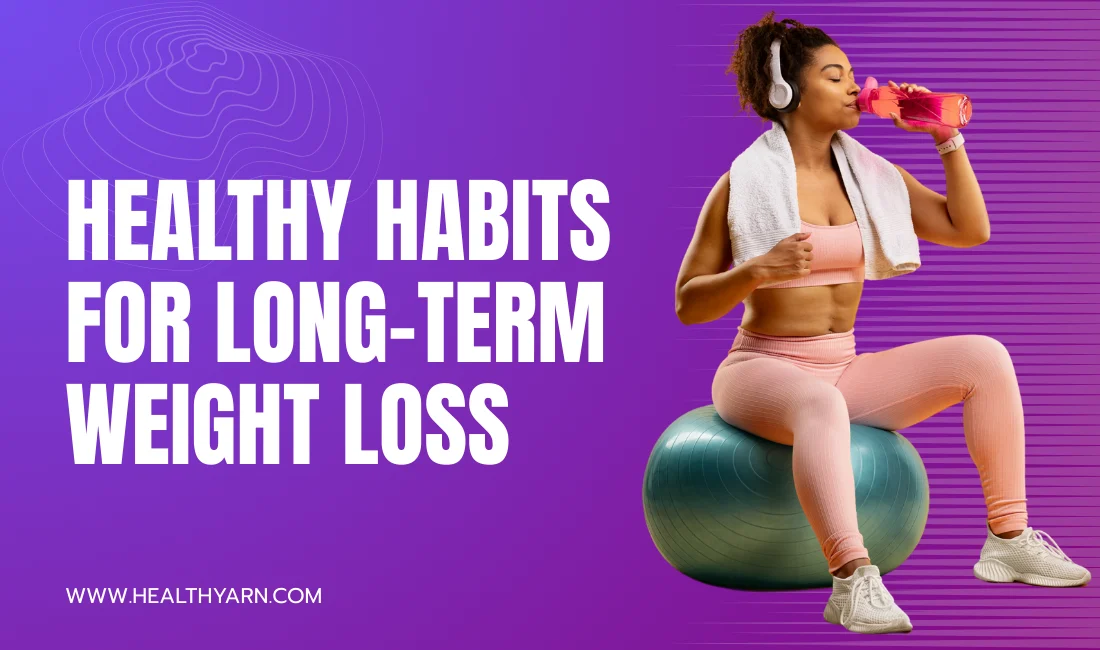Introduction To Expert Advice for Sustainable Weight Loss
Losing weight is a common goal for many individuals, but achieving sustainable weight loss can be challenging. In this article, we will provide expert advice and practical tips to help you embark on a successful weight loss journey. We will explore the importance of sustainable weight loss, the science behind it, and how to build healthy habits that promote long-term success. Additionally, we will delve into effective strategies for exercise and physical activity, as well as overcoming plateaus and staying motivated. Let’s dive in!
The Importance of Sustainable Weight Loss
Sustainable weight loss is more than just shedding pounds quickly; it involves adopting healthy habits that can be maintained over the long term. It focuses on making gradual and lasting changes to your lifestyle, ensuring that the weight you lose stays off. By prioritizing sustainable weight loss, you can improve your overall health and reduce the risk of weight-related diseases.
Understanding the Challenges of Traditional Weight Loss Methods
Traditional weight loss methods often rely on extreme calorie restriction or fad diets, which can lead to short-term results but are difficult to sustain. These methods can also negatively impact your metabolism and overall well-being. It is essential to understand the limitations of these approaches and instead opt for strategies that promote sustainable weight loss.
Setting Realistic Expectations for Sustainable Weight Loss
When embarking on a weight loss journey, it’s crucial to set realistic expectations. Sustainable weight loss is a gradual process that requires patience and consistency. Aim to lose 1-2 pounds per week, as this is a healthy and attainable goal. Setting realistic expectations will help you stay motivated and avoid feelings of frustration or disappointment.
The Science Behind Sustainable Weight Loss
The science behind sustainable weight loss revolves around caloric balance, metabolism, and balanced nutrition. By consuming fewer calories than you expend, creating a caloric deficit, and making mindful food choices, you can effectively manage your weight. Understanding metabolism and its impact on weight loss helps optimize your efforts, while balanced nutrition ensures you meet your nutritional needs while promoting weight loss. Regular physical activity complements these factors, contributing to long-term success.
Exploring the Role of Caloric Balance
Caloric balance is at the core of weight loss. To lose weight, you must consume fewer calories than you expend. This creates a caloric deficit, prompting your body to utilize stored fat as an energy source. By understanding caloric balance and making mindful food choices, you can effectively manage your weight.
Understanding Metabolism and Its Impact on Weight Loss
Metabolism plays a vital role in weight loss. It refers to the chemical processes in your body that convert food into energy. A higher metabolism leads to more efficient calorie burning. While genetics influence your metabolic rate, certain factors such as regular exercise and building muscle can boost it. Understanding your metabolism can help you optimize your weight loss efforts.
The Importance of Balanced Nutrition for Sustainable Weight Loss
Balanced nutrition is key to sustainable weight loss. Focus on consuming a variety of whole foods that provide essential nutrients while limiting processed and high-calorie foods. Aim for a well-rounded diet that includes lean proteins, whole grains, fruits, vegetables, and healthy fats. This approach ensures that you meet your nutritional needs while promoting weight loss.
Incorporating Regular Physical Activity into Your Weight Loss Journey
Physical activity is a crucial component of sustainable weight loss. It not only helps burn calories but also improves overall fitness and well-being. Engage in activities you enjoy, such as walking, jogging, swimming, or dancing. Aim for at least 150 minutes of moderate-intensity aerobic exercise per week, along with strength training exercises twice a week.
Building Healthy Habits for Sustainable Weight Loss
Developing healthy behaviors is essential for long-term weight loss. Mindful eating allows you to be totally present and conscious of your eating habits. Use smaller dishes and pay attention to hunger and fullness cues to practice portion control.
Use mindful eating practices to increase enjoyment and avoid overeating. It is critical to overcome emotional eating and to discover alternate strategies to manage stress. Making a meal plan provides balanced nutrition and healthier food choices.
Balancing macronutrients, eating fiber-rich meals, and meal planning all help. Hydration and decent sleep are critical components of the weight loss journey. You may set yourself up for long-term sustainable weight loss and reach your objectives by developing all of these healthy behaviors.
Developing a Mindful Eating Approach
Mindful eating involves being fully present and aware of your eating habits and sensations. It can help you develop a healthier relationship with food and make conscious choices. Practice portion control by using smaller plates and paying attention to hunger and fullness cues. Slow down while eating and savor each bite to enhance satisfaction and prevent overeating.
Practicing Portion Control
Portion control is an essential aspect of mindful eating. Be mindful of serving sizes and avoid mindlessly eating directly from the package. Use measuring cups or a food scale to ensure accurate portions. By controlling portion sizes, you can maintain a caloric deficit while still enjoying your favorite foods.
Mindful Eating Techniques for Greater Satisfaction
In addition to portion control, there are several mindful eating techniques that can enhance satisfaction and promote sustainable weight loss. Chew your food thoroughly, savoring the flavors and textures. Take breaks between bites and tune in to your body’s signals of fullness. By practicing these techniques, you can enjoy your meals more fully and avoid overeating.
Strategies for Overcoming Emotional Eating
Emotional eating can sabotage your weight loss efforts. It involves using food as a way to cope with emotions rather than to satisfy physical hunger. Identify your triggers and find alternative ways to manage stress, such as engaging in a hobby, practicing deep breathing exercises, or seeking support from loved ones. Developing healthy coping mechanisms will help you overcome emotional eating and maintain sustainable weight loss.
Creating a Well-Structured Meal Plan
A well-structured meal plan is a precious device for sustainable weight reduction. It affords structure, ensures balanced vitamins, and allows you’re making healthier food selections. Focus on incorporating lean proteins, entire grains, culmination, vegetables, and healthy fat into your meals. Meal planning also can store time and reduce the temptation to make bad food selections when you’re busy or worn-out.
Balancing Macronutrients in Your Diet
Macronutrients, including carbohydrates, proteins, and fats, are essential for a healthy diet. Balancing these macronutrients is key to sustainable weight loss. Aim for a well-rounded distribution of macronutrients, with a focus on complex carbohydrates, lean proteins, and healthy fats. This balance will provide sustained energy, support muscle growth and repair, and help you feel satisfied after meals.
Incorporating Fiber-Rich Foods for Satiety
Fiber-rich foods are incredibly beneficial for weight loss. They provide bulk, making you feel fuller for longer and reducing the likelihood of overeating. Include foods such as fruits, vegetables, whole grains, and legumes in your diet to increase your fiber intake. Additionally, fiber promotes healthy digestion and can help regulate blood sugar levels.
Meal Prep Tips for Success
Meal prepping is an effective strategy to support sustainable weight loss. Set aside time each week to plan and prepare meals in advance. This practice ensures that you have healthy options readily available and reduces the temptation to rely on fast food or unhealthy snacks. Invest in food storage containers, plan your meals, and batch cook ingredients to streamline the process.
The Role of Hydration in Weight Loss
Hydration plays a significant role in weight loss. Drinking an adequate amount of water can boost your metabolism, reduce calorie intake, and increase feelings of fullness. Aim to drink at least eight glasses of water per day and consider incorporating herbal teas or infused water for added variety. Staying hydrated supports overall health and enhances weight loss efforts.
Understanding the Connection between Water and Weight Loss
Water is often overlooked but is crucial for weight loss. It has no calories, making it an excellent choice for hydration. Additionally, staying hydrated can prevent fluid retention, reduce bloating, and support proper digestion. By replacing sugary drinks with water and making hydration a priority, you can optimize your weight loss journey.
Strategies to Stay Hydrated Throughout the Day
To stay hydrated throughout the day, it’s essential to develop strategies that promote regular water intake. Carry a reusable water bottle with you at all times and set reminders to drink water. You can also infuse water with fresh fruits, herbs, or citrus slices to add flavor. By incorporating these strategies, you’ll be more likely to meet your daily hydration goals.
The Link Between Sleep and Metabolism
Sleep plays a crucial role in weight loss. Lack of sleep can disrupt hunger hormones, increase cravings, and negatively impact metabolism. Aim for 7-8 hours of quality sleep each night to support your weight loss efforts. Establish a consistent sleep schedule, create a relaxing bedtime routine, and optimize your sleep environment for a restful night’s sleep.
Tips for Improving Sleep Quality and Duration
To improve sleep quality and duration, there are several strategies you can implement. Create a sleep-friendly environment by keeping your bedroom cool, dark, and quiet. Establish a consistent sleep routine, avoiding stimulating activities close to bedtime. Limit exposure to electronic devices that emit blue light, as it can interfere with melatonin production. By prioritizing sleep, you’ll enhance your weight loss journey.
Effective Strategies for Exercise and Physical Activity
Effective strategies for exercise and physical activity are crucial for sustainable weight loss. It starts with finding physical activities that you genuinely enjoy, as it increases the likelihood of long-term adherence. Explore different types of exercises, such as walking, cycling, dancing, or swimming, to find what suits your interests and lifestyle.
Incorporating variety into your routine by combining cardiovascular activities, strength training, and flexibility workouts maximizes weight loss results. Additionally, integrating physical activity into your daily routine and designing effective strength training and cardio programs contribute to successful weight loss. Consider high-intensity interval training (HIIT) as a time-efficient option with numerous benefits. By implementing these strategies, you can achieve sustainable weight loss while enjoying an active and healthy lifestyle.
Finding Physical Activities You Enjoy
Engaging in physical activities that you enjoy is key to sustainable weight loss. Explore different types of exercise, such as walking, jogging, cycling, dancing, or swimming, and find activities that bring you joy. When you enjoy what you’re doing, you’re more likely to stick with it in the long term. Experiment and find activities that fit your interests and lifestyle.
Exploring Different Types of Exercise
Variety is essential when it comes to exercise. Incorporating different types of exercise into your routine can challenge your body in new ways and prevent boredom. Combine cardiovascular activities like running or cycling with strength training exercises and flexibility workouts. This well-rounded approach will maximize your weight loss results and overall fitness.
Incorporating Physical Activity into Your Daily Routine
In addition to structured exercise sessions, finding ways to incorporate physical activity into your daily routine is crucial. Take the stairs instead of the elevator, walk or bike to nearby destinations, or do household chores that require movement. Small changes like these can add up and contribute to your overall activity level.
The Benefits of Resistance Training
Resistance training, also known as strength training or weightlifting, offers numerous benefits for sustainable weight loss. It helps build lean muscle mass, which increases your metabolism and promotes fat burning. Incorporate exercises that target major muscle groups, such as squats, lunges, push-ups, and deadlifts. Start with lighter weights and gradually increase as you become more comfortable.
Designing an Effective Strength Training Program
When designing a strength training program, it’s important to consider your fitness level and goals. Focus on compound exercises that work multiple muscle groups simultaneously. Perform 2-3 strength training sessions per week, allowing for recovery days in between. Gradually increase the intensity and challenge yourself with progressive overload. Consulting a fitness professional can help you design a program tailored to your needs.
The Role of Cardiovascular Exercise in Weight Loss
Cardiovascular exercise, also known as cardio, is a valuable tool for weight loss. It increases your heart rate, burns calories, and improves cardiovascular health. Choose activities that elevate your heart rate, such as running, swimming, cycling, or dancing. Aim for at least 150 minutes of moderate-intensity cardio per week or 75 minutes of vigorous-intensity cardio.
Understanding the Impact of Cardio on Caloric Expenditure
Cardio exercises help create a caloric deficit, leading to weight loss. The intensity and duration of your cardio workouts determine the number of calories burned. High-intensity workouts, such as interval training, can maximize caloric expenditure in a shorter amount of time. Incorporate both steady-state cardio and interval training into your routine for optimal results.
Incorporating Cardiovascular Activities into Your Routine
To incorporate cardiovascular activities into your routine, find options that you enjoy and can easily integrate into your schedule. If you prefer outdoor activities, go for a run or bike ride in your neighborhood or local park. If you prefer indoor workouts, consider using a treadmill, elliptical machine, or attending group fitness classes. Choose activities that align with your preferences and make it easier to stay consistent.
The Benefits of HIIT (High-Intensity Interval Training)
High-Intensity Interval Training (HIIT) is a powerful tool for weight loss. It entails alternating short bursts of extreme workout with short intervals of relaxation or low-intensity hobby. HIIT workout routines boom calorie burning, enhance cardiovascular health, and stimulate the release of boom hormones. Incorporate HIIT sporting events, which includes sprints, burpees, or kettlebell swings, into your fitness habitual.
Exploring the Benefits of HIIT for Weight Loss
HIIT workouts offer several benefits for weight loss. They are time-efficient, allowing you to achieve maximum results in a shorter amount of time. HIIT also boosts your metabolism, leading to continued calorie burning even after your workout is complete. Additionally, HIIT can help preserve lean muscle mass while promoting fat loss.
Designing an Effective HIIT Workout
Designing an effective HIIT workout involves selecting exercises that target different muscle groups and vary in intensity. Choose a work-to-rest ratio that suits your fitness level and gradually increase the intensity over time. Remember to warm up before starting your HIIT session and cool down afterward to prevent injuries. Consult with a fitness professional to create a personalized HIIT workout plan.
Overcoming Plateaus and Staying Motivated
Overcoming plateaus and staying motivated are essential aspects of a successful weight loss journey. Plateaus, where progress slows down, can be frustrating, but understanding their causes is key to overcoming them.
Adjusting your routine by increasing workout intensity, modifying your diet, and trying new exercises can break through plateaus and reignite progress. Managing frustration and staying committed to your goals is crucial. Accountability and support systems, including professionals and a supportive network, play a vital role in staying motivated.
Seeking professional guidance provides expertise, while building a support network offers encouragement and understanding. With these strategies, you can overcome plateaus and stay motivated on your weight loss journey.
Understanding Weight Loss Plateaus and Their Causes
Weight loss plateaus are common and can be frustrating. They occur when your body adapts to your current routine, resulting in a slowdown in weight loss progress. Several factors contribute to plateaus, including metabolic adaptation, decreased calorie burn, and muscle gain. Understanding these causes can help you overcome plateaus and continue making progress.
Strategies for Breaking Through Plateaus
To break through weight loss plateaus, you need to make adjustments to your routine. Increase the intensity or duration of your workouts to challenge your body. Modify your diet by adjusting your caloric intake or changing the macronutrient ratios. Incorporate new exercises or try different workout styles to shock your body and stimulate progress. Consistency and perseverance are key to overcoming plateaus.
Managing Frustration and Staying Committed
Feeling frustrated during your weight loss journey is normal. It’s important to manage these emotions and stay committed to your goals. Focus on the progress you’ve made so far and celebrate non-scale victories, such as increased energy, improved mood, or better sleep. Remind yourself of the reasons why you started and surround yourself with a supportive network that keeps you motivated.
The Role of Accountability and Support Systems
Accountability and support systems can significantly impact your weight loss journey. Consider seeking professional guidance from a registered dietitian, nutritionist, or personal trainer. They can provide personalized advice, monitor your progress, and help you stay accountable. Additionally, build a support network of friends, family, or online communities who share similar goals. Together, you can provide encouragement and share experiences and strategies.
Seeking Professional Guidance and Support
If you feel overwhelmed or unsure approximately your weight reduction journey, looking for expert guidance can be beneficial. Registered dietitians or nutritionists can assist create personalized meal plans, cope with nutritional deficiencies, and provide evidence-based advice. Personal trainers can layout workout programs tailor-made to your wishes, making sure safety and effectiveness. Professional support can optimize your weight loss efforts and provide the know-how and motivation you want.
The Importance of Building a Supportive Network
Building a supportive network is crucial for sustainable weight loss. Surround yourself with individuals who understand your goals and provide encouragement and accountability. Share your progress, challenges, and achievements with your support system. They can offer guidance, celebrate your successes, and provide a listening ear when you face difficulties. Having a strong support network increases your chances of long-term success.
Celebrating Non-Scale Victories and Setting Realistic Goals
Celebrating non-scale victories and setting realistic goals are vital components of a successful weight loss journey. While the number on the scale is important, it doesn’t fully capture the progress you’re making. Recognizing non-scale victories, such as increased strength, endurance, or improved body composition, reinforces the positive impact of your efforts.
By setting SMART goals that are specific, measurable, attainable, relevant, and time-bound, you shift your focus to behavior changes rather than just the numbers. This approach keeps you motivated and allows for continuous progress and adjustment along your weight loss journey.
Recognizing the Importance of Non-Scale Progress
Weight loss is not solely measured by the number on the scale. Non-scale victories are equally important and can motivate you throughout your journey. Celebrate improvements in strength, endurance, flexibility, or overall fitness. Take note of positive changes in your body composition, such as inches lost or clothing sizes dropped. Focusing on non-scale victories keeps you motivated and reinforces the positive impact of your efforts.
Setting SMART Goals for Sustainable Weight Loss
Setting SMART (Specific, Measurable, Attainable, Relevant, Time-bound) goals is essential for sustainable weight loss. Instead of focusing solely on a target weight, set goals related to behavior changes, such as exercising a certain number of times per week or eating a certain number of servings of vegetables daily. Make sure your goals are realistic, achievable, and have a specific timeline. Regularly assess and adjust your goals as you progress.
Conclusion
Sustainable weight loss is not a quick fix but a journey that requires commitment, patience, and the adoption of healthy habits. By understanding the importance of sustainable weight loss, embracing the science behind it, building healthy habits, incorporating exercise and physical activity, overcoming plateaus, and staying motivated, you can achieve long-term success. Remember to celebrate non-scale victories, set realistic goals, and maintain a supportive network to ensure lasting results.









